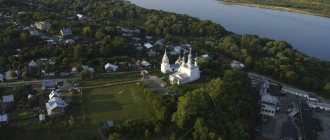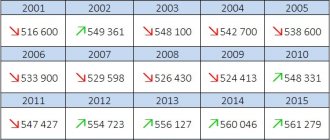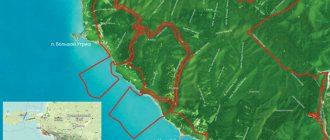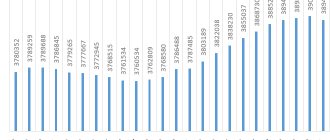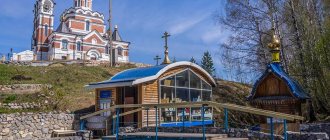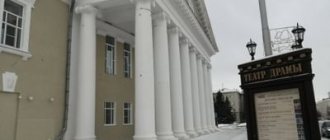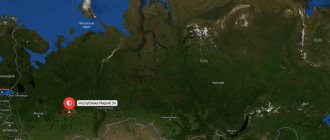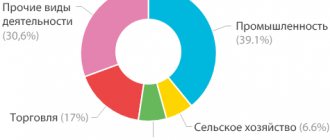Examples of distance calculations:
- Distance from Moscow to Kyiv
- Distance from Moscow to St. Petersburg
- Distance from Moscow to Nizhny Novgorod
- Distance from Moscow to Yaroslavl
- Distance from Moscow to Vladivostok
- Distance from Moscow to Minsk
- Distance from Moscow to Tver
- Distance from Moscow to Tula
- Distance from Moscow to Kazan
- Route Voronezh - Moscow
- Route Ekaterinburg - Moscow
- Route Rostov-on-Don - Moscow
- Route Ryazan - Moscow
- Route Kostroma - Moscow
- Route Vladimir - Moscow
- Route Smolensk - Moscow
- Route Samara - Moscow
- Route Kaluga - Moscow
When is distance calculation useful?
Free calculation of distances between cities shows the exact distance between cities and calculates the shortest route with fuel consumption. It may be required in the following cases:
- The distance calculation service helps plan a route for a road traveler, for example, for a summer holiday with his family or when planning a business trip by car. Knowing the gasoline consumption and the average price per liter of fuel, it is not difficult to calculate the obligatory financial costs of the trip.
- For a truck driver, calculating the distance between cities allows you to plot a route on the map when preparing for a long trip.
- The distance calculator is useful for the shipper to determine the mileage and, in accordance with the tariffs of the transport company, estimate the cost of cargo transportation.
Konakovo is a city in the Tver region, located at the mouth of the Donkhovka River, on the banks of the Ivankovo Reservoir. The main enterprises, and perhaps the main attractions of the city, are the Konakovo State District Power Plant and the porcelain and earthenware factory
.
It’s worth staying here for a few days, renting apartments for daily rent in Konakovo, and exploring the local beauty. The portal Sutochno.ru will tell you how rich the city is.
Earthenware factory
A unique monument of industrial architecture
Today they represent the old buildings of a faience factory. They have become a kind of “calling card” of the city and organically fit into its current landscape, giving a special flavor to the former “capital of faience”. Yes, that’s what Konakovo was called in the past.
Church of the Nativity of the Virgin Mary
Church of the Nativity of the Mother of God - a unique architectural monument of the 14th century
, located in Konakovsky district.
This is not only the oldest building in the Tver region, but also one of the oldest churches in Russia
. To see this famous church, you will have to go to the village of Gorodnya, located nearby. The church also became famous for the fact that ancient frescoes dating back to the 15th century were discovered in its underground temple.
Karacharovo village
A very interesting place is the village of Karacharovo, located within an urban settlement. Many ancient buildings and attractions have been preserved here. Most of the buildings date back to the second half of the 19th century. At that time, the village was owned by the famous educator and painter, Prince Gagarin. In the village it is worth seeing the landowner's house, the Church of Peter and Paul, as well as an ancient park, which was laid out in the likeness of London's Hyde Park. There are also healing mineral springs in Karacharovo
, where the boarding house now operates. However, if you wish, you can also rent an apartment for a day in Konakovo.
Monument to Porfiry Konakov
The monument is located at the railway station. As for Porfiry Konakov himself, he was a famous freedom fighter and a tireless revolutionary
. In 1906 he organized a sailor riot in Kronstadt, for which he was subsequently shot. The city was renamed in his honor in 1929.
Ruins of the city of Korcheva
A glorious ancient city with beautiful buildings and golden-domed churches, Korchev was flooded at one time during the creation of the Ivankovo reservoir. All that remains today of the majestic city is only an ancient cemetery, a church near it and the house of the Rozhdestvensky merchants, the only surviving stone structure. This is how the Sutochno.ru portal saw the extraordinary city of Konakovo. We wish you a pleasant holiday!
Tags: Attractions, What to see
How to use distance calculation?
In order to calculate a route between cities, start entering the name of the starting point of the route in the “From” field. Select the desired city from the contextual tool drop-down. By analogy, fill out the “Where” field and click the “calculate” button.
On the page that opens, the route will be laid out on the map, the starting and ending settlements will be marked with red markers, and the route along the road will be shown with a red line. Above the map the total length of the route, travel time and fuel consumption will be indicated. Below this information there will be a summary table with detailed information about the route and sections of the route: type of road, estimated length and duration of each section of the route.
The resulting route can be printed or, by changing some parameters, the calculation can be repeated. In additional settings, you can specify transit settlements, as well as adjust the estimated speed on roads of each type. Below the additional settings there are data entry fields for the fuel calculator. Enter in them the current fuel consumption of your car and the average price of 1 liter of fuel. When re-calculating, this data will be used to calculate the required amount of fuel and its cost.
Story
“Information provided based on materials from Konakovo local historian Gennady Vladimirovich Lubov” Known since 1806 as the village of Kuznetsovo
;
named after one of the early owners of the village. In 1826-1828 landowner Auerbach
moved a porcelain factory here from the village of
Domkino
(originally founded in 1809
by Friedrich Christian Brynner
). In the first years after its inception, the village of Kuznetsovo developed relatively quickly. The village of the Kashinsky landowner Vorobyov passed to one of the local landowners, who moved his residence to it. This can be judged because Kuznetsovo became a village, i.e. it already had a landowner's estate, consisting of a manor's house with outbuildings and peasant houses. In addition to the landowner’s family, fifteen souls of courtyard people lived in the estate. These are the peasants who served the landowner's family and whom the owner supported in full allowance: he fed, clothed, and provided housing. In addition to the servants in the village and surrounding villages, which were owned by the owner Kuznetsov, there were 87 more peasants. They ran an independent household. It can be assumed that the peasants of distant villages were sharecropping. In this case, the landowner did not need to spur the peasants, because they were economically interested in increasing the volume of agricultural production and increasing productivity, since at the same time more products remained at the peasant’s disposal. But those peasants who lived in Kuznetsovo “in full view” of the landowner certainly worked their corvee in the landowner’s fields, meadows and gardens, and there was almost no time left for their plots and they worked them at night and on holidays. However, the natural conditions of the Kuznetsov lands, as we already know, were not so favorable. In any case, there was a lot of wasteland in the domain. And this meant that after a few years, the uprooted and plowed lands, without “sufficient fertilizer,” ceased to produce any decent yields and were abandoned, turned into hayfields, and gradually overgrown with bushes. The landowners again had to leave the peasants to work on the development of forests: cutting down trees, uprooting stumps, plowing new lands. And this, in the conditions of the 19th century, was very, very labor-intensive and expensive. But after a few years, the new lands were depleted and also turned into wastelands. Not receiving sufficient income from the Kuznetsov lands, the owners got rid of them, sold them to other landowners, turning them into money. In 1821, an announcement appeared in the newspaper “Moskovskie Vedomosti” about the next sale in the Korchevsky district of the Tver province of the village of Kuznetsovo with the villages “Belavina and Skrylyova / so in the document G.L. / Land was sold at 50 rubles per tithe / tithe equal to 1.09 hectare. - G.L. /, and peasants 350 rubles per head. So that the reader can compare this dispassionate price with the prices of some familiar objects, let’s say that during the period of the events described, a dozen / 12 pieces - G.L. / ordinary plates on the domestic market cost 6 rubles or 50 kopecks per piece. And thus, the price of a peasant soul was equivalent to the cost of only 700 plates. And the price of a tithe of Kuznetsov land was generally scanty, even just symbolic: 100 pieces or two stacks of plates. To clarify the scale of prices, it should be said that the monthly salary, for example, of a blacksmith-artisan was then about 10 rubles; carpenter on average 5 rubles, and the salary of the director of the state-owned Kiev-Mezhigorsk factory was a little more than 62 rubles per month. Residential and commercial buildings, valued at 15 thousand rubles, were sold for almost half the price - only 8,700 rubles, just to quickly get rid of a place that was unpromising, from the point of view of the landowner. This is how the landowner M. M. Rudakov acquired the village of Kuznetsovo, but he did not like the Kuznetsovo lands. In February 1824, a deal was concluded to sell Kuznetsov to a new owner, the widow of Lieutenant Chiari. But she, after a year and a half, is trying to get rid of this truly enchanted place. However, there is no buyer for the land. And then a terrible event happened, as the poet said: bitter grief wandered around the world and came to our village. A certain captain Nikifor Ulyanin agreed to buy from Chiari only some peasants with a personal scrub in order to transport them to his domain. Without hesitation, the cruel landowner agrees with this proposal. As a result, dozens of peasant families are forced to abandon their recently laboriously rebuilt houses and, having collected simple scrubs, with their children and all the moving property that could be lifted onto carts, go into the unknown to a new place of residence. The village of Kuznetsovo and the village of Belavino, offered for sale, are deserted. The peasants' winter grain disappeared under the snow, ownerless, and the peasant huts for the winter of 1825-1826 were left with boarded up doors and windows. Kuznetsovo was dying. And, probably, the lands around it would have turned into another wasteland if an event had not occurred that is characteristic of the contradictions between the moribund feudal system and capitalism getting back on its feet. Twenty versts east of Kuznetsovo in the village of Domkino, a large at that time one of the first Russian earthenware factories, owned by the manufacturer A. Ya. Auerbach, had been operating for more than 15 years. His factory was built on land rented from the Korchevsky landowner F.L. Korobanov. The lease expired in 1829. Unfortunately for Auerbach, the land under his factory was transferred back in 1815 to another Korchev landowner F.A. Golovachev. Obviously, he was more enlightened and knew “how the state gets rich and how it lives,” and therefore in 1825 he warns Auerbach that, according to the lease agreement, by 1829 he must “take all his movable and immovable property to where he will decide to return the land.” And this property represented a huge farm, consisting of 33 different production buildings. Auerbach’s attempts to convince Golovachev to sell the land under the factory or at least extend the lease period did not lead to positive results. Auerbach was forced to look for suitable land for the factory, and not far from Domkino, in order to complete the relocation of the enterprise as cheaply and quickly as possible. And then he finds out that a plot of land in the village of Kuznetsovo is for sale inexpensively. The location couldn't have been better. Auerbach was also impressed by the presence of an untouched “wood forest”, which was needed for fuel during firing; and empty peasant houses where workers can be immediately placed; and a river, which could become a source of energy if it was blocked with a dam and a water engine was installed. That is, everything that did not suit the landowner turned out to be a benefit for the capitalist. On January 14, 1826, a document on the purchase and sale of the village of Kuznetsov was drawn up. The landowner Chiari was obviously dissatisfied that her noble nest was passing not to a nobleman, but to some merchant, just a Mr. Pharmacist without any ranks according to the Table of Ranks. But there was no other way out. And, parting with the land, probably in order to somehow humiliate the buyer from the lower class, she invites nobles as witnesses, whose names, ranks and titles occupy almost an entire page of the deed of sale. And know ours! Among the witnesses are: one prince, two gentlemen, two collegiate advisers of the 11th class, one collegiate assessor of the 13th class, five titular advisers of the 9th class, and only one collegiate registrar of the 19th class, the last class. What was included in Auerbach's purchase? According to the bill of sale, Chiari for 6,500 rubles in banknotes sells to Auerbach and his heirs in the village of Kuznetsov and in the village of Belavino • “arable and uncultivated, estate, garden and dehumidified land with forests, with hay fields and all lands, with winter crops sown on it as the master’s, and with peasant bread, with the master's house in the village of Kuznetsovo and with the furniture in it. . ., with a garden, greenhouses, a ground barn and with the fruit trees in them, with the master's livestock, poultry and the remaining / after I sold to captain Nikifor Ulyanin for the transport of peasants without land with property / various peasant buildings. And on top of that, waste latrines located in the same Korchevsky district, called Syomkino, Viskino, Shchepino, go on sale at the same time. . " As can be seen from this document, in two years the land near Kuznetsov and estate property have fallen in price by more than a quarter. The deal was very successful for Auerbach. Using the data placed at the beginning of the article, we can calculate that the cost of the acquired Kuznetsovsky farm was equivalent to the cost of only 13 thousand plates, of which the company produced hundreds of thousands annually. Immediately after completing the purchase, Auerbach begins transporting his farm from Domkino to Kuznetsovo. A new stage in the history of the village of Kuznetsov begins.
In 1870, the porcelain and earthenware factory was purchased by the manufacturer M.S. Kuznetsov
, owner of a number of porcelain factories. In 1870, the Auerbach faience factory became the property of Matvey Sidorovich Kuznetsov, who was the head of a large porcelain and faience company at that time, which united the Dulevskaya and Riga porcelain factories, as well as a factory in Volchya Polyana near Kharkov.
M.S. Kuznetsov can rightfully be classified as one of the galaxy of major Russian capitalists - the Morozovs, Prokhorovs and other people from peasant families. He applied his natural intelligence, ingenuity and resourcefulness, the ability to overcome difficulties, cultivated for centuries by the peasant environment, in organizing large-scale production, using the most advanced achievements of science and technology of his time. The Kuznetsov family comes from the Moscow region, from Gzhel. Together with the neighboring Guslitskaya volost, this area in the 18th and 19th centuries was known entirely for the Old Believer population and the development of a wide variety of crafts. Here they painted icons and copied song books for the Old Believers, made cotton fabrics, did copper casting, and made pottery. Under the influence of Guslitsky traditions, new centers of trade, entrepreneurship and Old Believers emerged. The concept of “guslyak” in the mass consciousness of that time was synonymous with an Old Believer, who firmly knew his religion and at the same time was a clever businessman. At the beginning of the 19th century in Russia there were signs of a weakening monopoly of the nobility on land. In 1801, free purchase and sale of uninhabited land was allowed. In 1803, landowners received the right to free peasants for ransom. In 1818, peasants were allowed to build factories and factories. The most enterprising serfs hastened to take advantage of the new rights. In 1810, Yakov Vasiliev, a Gzhel peasant who worked as a blacksmith, bought himself out of the landowner. Later he adopted the surname Kuznetsov due to his craft. During the period of initial accumulation of capital, the Kuznetsovs provided the Gzhel majolica and pottery industries with firewood and charcoal burned by them for the forges. In the same 1810, Yakov Vasilyevich Kuznetsov hired craftsmen and opened the first enterprise for the production of porcelain tableware. The new production promised big profits, which aroused the envy of local residents. Twenty-two years later, son Terenty Yakovlevich acquires a new plant - Dulevsky in the very heart of Guslitsy. His main workers were Guslitsky peasants. In the forties, he bought the Safronov porcelain factory in the village of Korotkaya near Dulev on Gzhel in the Bogorodsky district of the Moscow province. Ten years later, in 1843, he founded a porcelain and earthenware factory in Riga. After the death of Terenty and the division of property between the heirs in the early 50s, his son Sidor became the owner of the Dulevskaya factory, factories in Korotkaya and Riga. The factory in Novo-Kharitonov remained in joint ownership with the brothers. In 1854, Sidor abandoned her in favor of other brothers. This “old” factory fell into crisis at the end of the 50s and closed at the turn of the 50s and 60s. At the beginning of the 50s, Sidor closed the factory in Korotkaya and transferred it to Dulevo, thus concentrating production in one enterprise. By the end of the 50s, 860 workers already worked here, and the production of tableware reached 90,000 rubles per year. In 1846, on August 2, in the village of Novokharitonovo, Gzhel volost, Bronnitsky district, Moscow province, Sidor had a son, Matvey. According to Old Believer traditions, he received a home education. At the age of 15, he was sent to Riga to a porcelain and earthenware factory, where, under the guidance of manager Rudakov, a strict and knowledgeable man, he learned the secrets of technology and organization of porcelain and earthenware production. Sidor Kuznetsov died in 1864. After the death of his father, Matvey continued his education at the Riga Commercial School. In Riga M.S. Kuznetsov entered the merchant class and until the end of his life was called the “Riga 1st Guild Merchant.” In the same year, according to the spiritual will, the only son in the family inherits the entire business, and takes over the management of the enterprise, first under the guardianship of his sisters’ husbands and co-directed with Ivan Emelyanovich (cousin). In 1865 M.S. Kuznetsov marries Nadezhda Vukolovna Mityushina from a Bogorodsk merchant Old Believer family. Since 1867, from the age of majority, Matvey Sidorovich has been conducting business independently. In 1870, Ivan Emelyanovich took his part of the capital, went out of business and opened factories in the Novgorod province in 1878 - Volkhovsky, in 1892 - Bronnitsky, in 1897-1900 - Gruzinsky. After these events, family production was no longer subject to division. The beginning of Matvey's activity coincided with a radical change in the socio-economic situation after the abolition of serfdom, with the termination of the protective tariff of 1822? year and a sharp increase in competition due to the influx of foreign goods into Russia, the crisis of “old” factories that did not update fixed capital in a timely manner and ignored market demands. But M. Kuznetsov not only skillfully managed his factories, but in 1870 bought the oldest, famous at the royal court, Auerbach's earthenware enterprise in the village. Kuznetsov, Tver province. In 1871, a plant was built in Budy, Kharkov province. This plant was put into operation 16 years later, in 1887. On January 1, 1889, the Partnership for the Production of Porcelain and Earthenware, headed by M.S. Kuznetsov." In 1890-92, the Partnership built a porcelain factory in Slavyansk. In 1892, he acquired the oldest private Russian porcelain factory in the village of Verbilki (now the Dmitrov Porcelain Factory), while Kuznetsov negotiated with the factory owner “ownership of the Gardner company, an image of the state emblem, awards and medals, which Kuznetsov can use unlimitedly within the limits permitted by law " Being a good businessman, Kuznetsov took into account the great popularity of Gardner porcelain in both domestic and foreign markets. He did not want to lose regular customers and buyers who had valued this porcelain for many decades. And right up to the October Revolution, the Gardner brand appeared on Verbilkovsky porcelain. In 1894, the porcelain factory of Karyakin and Rakhmanov in the village of Pesochnoye, Yaroslavl province (founded in 1884 by the merchant Nikitin) became the property of the Partnership. In 1898, the earthenware factory of the Joint Stock Company Maltsov Plants in the village of Pesochnya, Kaluga province (founded in 1851) was rented. In 1911, this factory became the property of the Kuznetsov “Partnership”. Thus, by the end of the 19th century M.S. Kuznetsov monopolizes porcelain and earthenware production and subordinates it to his influence. About a seventh of the porcelain and earthenware factories in Russia belonged or were controlled by the Partnership. Products worth 724,900 rubles were produced, which amounted to 2/3 of all-Russian production. Such a concentration of production in one hand has never been known in other industries in Russia……………………………Details
Thus, the name of the village “coincided” with the surname of the owner of the plant, which was due to the widespread prevalence of the surname Kuznetsov, which is one of the most common in Russia. The factory produced empire-style earthenware with printed designs and hand-painting. By 1890, the production of dishes from semi-faience, majolica, and porcelain had also been mastered, and the products became more widespread.
Development of the plant after the Great October Socialist Revolution
After the victory of the armed uprising in Petrograd on November 7 (October 25 old style) 1917 and the establishment of Soviet power, revolutionary events swept throughout Roovia. Everywhere workers, peasants and soldiers took power into their own hands. The establishment of Soviet power also took place in the Tver province, including in the Korchevsky district. In the village Kuznetsovo essentially power belonged to the Bolshevik revolutionary committee even before the victory of the proletarian revolution. And a decisive role in the establishment of Soviet power in the district center of the mountains. Korcheva was played by workers of the Kuznetsov porcelain and earthenware factory. The Bolshevik revolutionary committee from the factory workers created a fighting squad of Red Guards, which numbered 150 people. To arm them, 70 rifles and grenades were received from Tula. A representative of the Petrograd Military Revolutionary Committee, Rozhkov, arrived at the factory. At a general meeting of workers, he made a report on the revolution in the capital, on the transfer of power to the Council of People's Commissars. At this meeting, the factory staff declared their firm will to support Soviet power, to strengthen it, so that, without stopping at the rims they had conquered, they would move further towards socialism..... “details” Since the mid-1920s. The plant began to attract major artists to work on the shape and painting of vessels, whose works contributed to the overall rise in the artistic side of production. The village of Kuznetsovo developed around the plant.
. Workers' settlement since July 14, 1925
In 1929, the name of the village changed to Konakovo
.
The name was chosen based on the results of a competition, at the suggestion of factory worker Maria Vikulovna Ilyutina. The settlement was named in honor of Porfiry Petrovich Konakov
, a local native.
Among the 300 families that Kuznetsov resettled from Guslitsy and Gzhel to the village of Kuznetsovo in the late 70s of the 19th century was the family of Pyotr Ivanovich and Agrafena Andreevna Konakov. They had 6 children: 5 daughters and a son, Porfiry, who was born no earlier than mid-August and no later than the beginning of November 1878 in the village of Antsiferovo, Bogorodsky district, Moscow province. (Now the Noginsk district of the Moscow region). Ceramic crafts flourished in this area. And it was from here that the owners of large porcelain factories - Gardner, Popov, Kuznetsov - drew qualified labor. Pyotr Ivanovich Konakov worked as a painter by profession. And when the factory in Kuznetsovo began to master porcelain, it was transferred to the maker of luster - a special glaze for decorating porcelain and earthenware. Porfiry spent his childhood in the village of Kuznetsovo. He graduated from the 4th grade of a public school. Here his curiosity, lively mind and extraordinary abilities in mastering knowledge were revealed. In 1890, the 4-year course of study ended and 12-year-old Porfiry became a student of a rare master - the painter Sergei Vasilyevich Krasnoshchekov, his father’s workmate. During his studies, Konakov mastered the intricacies of painting, carefully followed the techniques of work, learned the professional secrets of a skilled master……………….”details”
City of Konakovo since 1937
The Konakovo municipal archive contains a copy of an extract from minutes No. 69 of the meeting of the Presidium of the All-Russian Central Executive Committee of Soviets dated March 2, 1937 - on the transfer of the center of the Konakovo district from the city of Korchevy to the working village of Konakovo and the transformation of the latter into a city (Tver Regional Archive Fund R-2043, OP.1, D.74, L.167).
Date modified: 05/28/2019 17:07
Other routing methods
Perhaps the simplest alternative is to open a road atlas and plot a route on the map by eye. Then, by rolling a curvimeter along the route, you can get the approximate mileage. Estimating travel time will be more difficult: to do this, you will have to divide the route into fragments with the same class of roads and measure the sum of the lengths of the fragments of each class. Further, knowing the average speed for each class of roads, it is easy to calculate the time by dividing the distance by the speed.
If you don’t have a curvimeter at hand, you can use a ruler. Place the zero mark of the ruler at the starting point of the route and move the ruler, tightly adjoining it to the curves of the road.
You can also calculate the distance between cities using tables that are published in atlases and reference books. This is quite convenient for routes starting and ending in large cities. Small settlements, as a rule, are not included in the tables.
City - general information
Common data:
The city of Konakovo is located in the southeastern part of the Tver region. Population - 42.0 thousand inhabitants. The city is located on the banks of the Ivankovo reservoir on the river. Volga, 82 km southeast of Tver and 22 km from the M10 federal highway.
Transport arteries
: It occupies a favorable geographical position, located on the railway (Moscow - St. Petersburg), water (Volzhskaya) and road (Moscow - St. Petersburg) highways, close to such large industrial and cultural-historical centers as Moscow - Tver. The city of Konakovo is connected by a railway line to the Reshetnikovo station (Moscow region), located on the Moscow – Tver – St. Petersburg route.
Relief:
The relief is flat and hilly. It is all located within the Upper Volga outwash lowland, occupying almost its entire Volga-Shoshinsky section. The relief of the Volga-Shoshinskaya lowland is flat and level. It has a slight slope to the northeast, along which rivers flow. Near the city of Konakovo the absolute height reaches 124m.
Administrative division:
The boundaries of the territories of the municipal formation and its constituent urban and rural settlements are established by the law of the Tver region “On establishing the boundaries of municipal formations included in the territory of the municipal formation of the Tver region “Konakovsky district”, and granting them the status of urban and rural settlements” dated February 28, 2005 No. 31-З0. The territory includes: - Konakovo city, - village. Belavino, village. Rechitsa, village. Shumnovo, village. Vakhromeevo, village. Karacharovo, village. Energetic.
| LIST | ||
| Chairmen of street committees of the city of Konakovo |
| No. | Boundaries of street committees | FULL NAME. chairman |
| 1 | Gogol str. 4-64 | Anikeev Andrey Anatolievich |
| 2 | Ligovka st., Dekabristov st. | Askolova Tatyana Pavlovna |
| 3 | Yuzhnaya St. 1-19, Engels St., Marshak Ave., Kominterna St., Solnechnaya St. | Bakuncheva Maria Nikolaevna |
| 4 | Zagorodniy lane | Balikhina Antonina Stepanovna |
| 5 | Pervomaiskaya street 2-52, 1-61, Pervomaisky lane | Barabanova Valentina Aleksandrovna |
| 6 | Revolution St., 3rd Parkovaya St. | Botuleva Tatyana Georgievna |
| 7 | Pervomaiskaya street: 54-128, 63-125 | Busygin Gennady Grigorievich |
| 8 | Paris Commune street, Krasny lane, Kommunarov lane | Vershinina Larisa Evgenievna |
| 9 | Transportnaya street: 4-50 | Gavrikova Tatyana Sergeevna |
| 10 | Frunze st., Dachny lane | Galkin Konstantin Anatolevich |
| 11 | Krylova st. | Gayanova Galina Ivanovna |
| 12 | Zavodskaya st., Proletarskaya | Gorchakova Valentina Mikhailovna |
| 13 | Yuzhnaya st. 20-28, Kolkhoznaya st., Workers st., Chapaeva st. 21-30 | Gorshkova Yaroslavna Valerievna |
| 14 | Muravyovskaya st., Lesopilnaya st., Kirova st. | Gureev Maxim Valerievich |
| 15 | lane Zheleznodorozhny | Drozdova Larisa Vasilievna |
| 16 | Oktyabrskaya street | Dyukova Lyudmila Petrovna |
| 17 | Staro-Bazarnaya square, Svobodskaya lane, 1st Embankment st.: 2-42, Narodnaya st. | Efremova Lyudmila Gennadievna |
| 18 | Molodezhnaya st., Sverdlova st. | Zamolotdinova Irina Vasilievna |
| 19 | Novo-Pochtovaya St., Tsiolkovskogo St., Drozhzhina St. | Zubarev Sergey Vladimirovich |
| 20 | Shumnovsky Ave., Polevoy Lane. | Illarionova Tatyana Alexandrovna |
| 21 | Krasnoarmeyskaya st. | Iskhanova Galina Petrovna |
| 22 | Microdistrict Zeleny Bor | Kagirov Valery Alexandrovich |
| 23 | Kommunisticheskaya st. | Kareva Olga Valentinovna |
| 24 | Kooperativnaya st.: 42-94, 53-109 | Kanaeva Elena Dmitrievna |
| 25 | Rabochaya st., Klyuchevaya st., Sadovaya st. | Korshunov Nikolay Pavlovich |
| 26 | Herzen street | Kremnev Vladimir Viktorovich |
| 27 | Gogol street: 63-114 | Kulenyuk Valentina Nikolaevna |
| 28 | st. Pionerskaya | Kulesh Valentina Vasilievna |
| 29 | Svobody street 147-183, 164-198, Gogolevsky lane | Kulagin Vitaly Sergeevich |
| 30 | Lesnaya st., Lesnoy lane | Kuragin Vitaly Alexandrovich |
| 31 | Kooperativnaya st. 2-51 | Litvinenko Anna Romanovna |
| 32 | Dachnaya st., Lugovaya st., Tsvetochnaya st. | Lantsov Roman Mikhailovich |
| 33 | Yuzhnaya st.: 28-64, Chapaeva st.: 32-54, 21-41, Nekrasova st., Elektrovozny lane, Lokomotivny lane, Kolkhozny lane | Makarova Alla Petrovna |
| 34 | Gaidar St., 1st, 2nd, 3rd Tverskaya, Green St., Kominterna St.: 33-39 | Maksakov Petr Yurievich |
| 35 | STREET Zeleny Bor | Maloedov Nikolay Alexandrovich |
| 36 | Aleksandrovka st., Novostroevsky lane, Aleksandrovsky lane, Gresovsky ave. | Myachin Sergey Dmitrievich |
| 37 | Vokzalnaya st. | Nikiforova Marina Sosoevna |
| 38 | Krasnogvardeyskaya street | Naumova Lyubov Yurievna |
| 39 | Microdistrict Zeleny Bor | Papkov Sergey Andreevich |
| 40 | Pochtovaya st. | Petrov Nikolay Filippovich |
| 41 | Pravdy street | Posysaeva Nina Nikolaevna |
| 42 | Rechitsy village | Redkin Valery Viktorovich |
| 43 | Chapaeva st. 2-20, 1-19, Kominterna st., Tchaikovsky st., Zarechnaya st., Rechnaya st., Michurina st., Oktyabrsky lane, Lugovoy lane | Rodionova Valentina Ivanovna |
| 44 | Komsomolskaya st., 2nd Parkovaya st., Peschanaya st. | Savina Alesya Anatolyevna |
| 45 | village Belavino | Sarygina Galina Mikhailovna |
| 46 | Gogol street 73-166 | Sedogin Viktor Fedorovich |
| 47 | Vakhromeevo village | Simonenko Olga Mikhailovna |
| 48 | Pestelya street, Pestelya lane | Slepnev Valery Borisovich |
| 49 | Vorovskogo street | Sokolova Valentina Ivanovna |
| 50 | 2nd Vokzalnaya st., Parkovaya st., Vokzalny lane | Smirnov Andrey Yurievich |
| 51 | Sovetskaya st., Chekhov st., Popova st. | Stepanov Mikhail Ivanovich |
| 52 | Belavinskaya st. | Surmagin Vladimir Mikhailovich |
| 53 | Novaya st., Sosnovaya st., Sosnovy lane | Surupov Denis Anatolievich |
| 54 | Polevaya st. | Tagiltseva Vera Nikolaevna |
| 55 | village Shumnovo | Tulupova Lidia Alexandrovna |
| 56 | Pushkinskaya street | Fedorov Alexander Ivanovich |
| 57 | Borovaya street: 1-66 | Kholikova Elena Zairovna |
| 58 | Krupskaya street | Khotin Vyacheslav Nikolaevich |
| 59 | Bulatova street | Chernikova Valentina Egorovna |
| 60 | Radishcheva St., Komsomolsky Square St. | Chernova Elvira Makarovna |
| 61 | Sergeeva st. | Chudina Nina Fedorovna |
| 62 | 1st Embankment street from No. 82 | Shilova Serafima Ivanovna |
| 63 | Svobody street 1-103, 2-122, Bazarny lane | Shishkina Valentina Kharitonovna |
| 64 | Prigorodnaya st. | Shumkov Igor Valerievich |
Regulations on the Chairman of the street committee of the municipal settlement "Urban settlement Konakovo"
Date of change: 05/28/2019 17:07
Algorithm for calculating the distance between cities
Route calculation is based on an algorithm for finding the shortest path in a weighted road graph (Dijkstra's algorithm). Distances are determined using exact satellite coordinates of roads and settlements. The calculation is the result of computer modeling, and models are not ideal, so when planning your trip route, do not forget to include a reserve.
See also:
- table of distances between Russian cities
- Calculate distances for your site
- Calculation of distances in other languages in other countries:
Konakovo
Konakovo Intersettlement Central Library
There are two Houses of Culture in the city - the relatively young cultural center “Sovremennik” and the cultural center named after. Vorovsky, built in the 1930s. In the new part of the city there is a Sports Palace with a swimming pool and a multifunctional hall, a sports complex on Baskakova Street, where the sports school for sambo and other martial arts trains, and the Coliseum stadium (built in 2010) with a grandstand for 700 seats. In the old part of the city there is the Olympus sports complex, built in 2009.
The Konakovo Museum of Local Lore is located on the territory of the city[28]. The museum widely presents archaeological finds - dating back to the Stone Age, Bronze Age, and early Iron Age. The museum also contains portraits, documents, letters that testify to the connection with the region of the Decembrists I. Ya. Yakushkin, A. N. Tolstoy, and the poet A. Polezhaev. The exposition of the village of Karacharovo, also belonging to the museum, tells about the artist G.G. Gagarin. Traditionally, visitors are interested in exhibitions telling about the war years (the Battle of Moscow), the construction of the Moscow-Volga canal, and the transformation of the village of Kuznetsovo into the city of Konakovo[28].
On April 28, 2012, the Konakovo Faience Museum was opened in the Konakovo Intersettlement Central Library[29]. The museum exposition shows the history of Konakovo faience by stages of development. Now there are more than 300 products. These are antique Kuznetsov faience, products from the Soviet period, original works of recent years. Among them are many unique masterpieces: the sculpture “Pushkin on the Sofa” by I. Frikh-Hare, which received a Gold Medal at the World Exhibition in Paris in 1937, “Epronovets” by I. Chaikov, rare author’s copies of “Oksana with a Mirror” by M. Kholodnaya and “Gypsy Woman” "V. Filyanskaya, "Mammoth Hunt" by G. Sadikov, which received a Silver medal in 1962 at the international exhibition in Prague, etc.
Many works present in the Konakovo Faience Museum are also in the collections of the Russian Museum, the State Historical Museum, the State Ceramics Museum in Kuskovo and other museums in the country: “Don Quixote” by E. Gurevich, “Cat on a Ball” by I. Efimov, “Little Giraffe” by V. Sergeev, sculptures by P. Kozhin, Sh. Shukvani, works by A. Khikheeva, V. Shinkarenko, Belyakov, G. Kupriyanov, A. Kazankov. The museum collection belongs to a private individual. In the future, its owner, collector Olga Yuryevna Yartseva, plans to transfer it to the state.
There is a sanatorium "Energetik"[30].
The Central Library of the Konakovo District[31] has repeatedly held and still hosts exhibitions of artistic works by little-known local artists. Everyone can try to show their talents to the public. Thus, in February 2022, an exhibition of the original artist Vera Petrova was held[32].
In the city there is an educational, sports and recreational complex of the Russian National Research Medical University named after. Pirogov (Moscow)[33].
Twin Cities
- Menomonee, Wisconsin, USA (1994)[34]
- Tolochin, Vitebsk region, Belarus (2016)[35]
